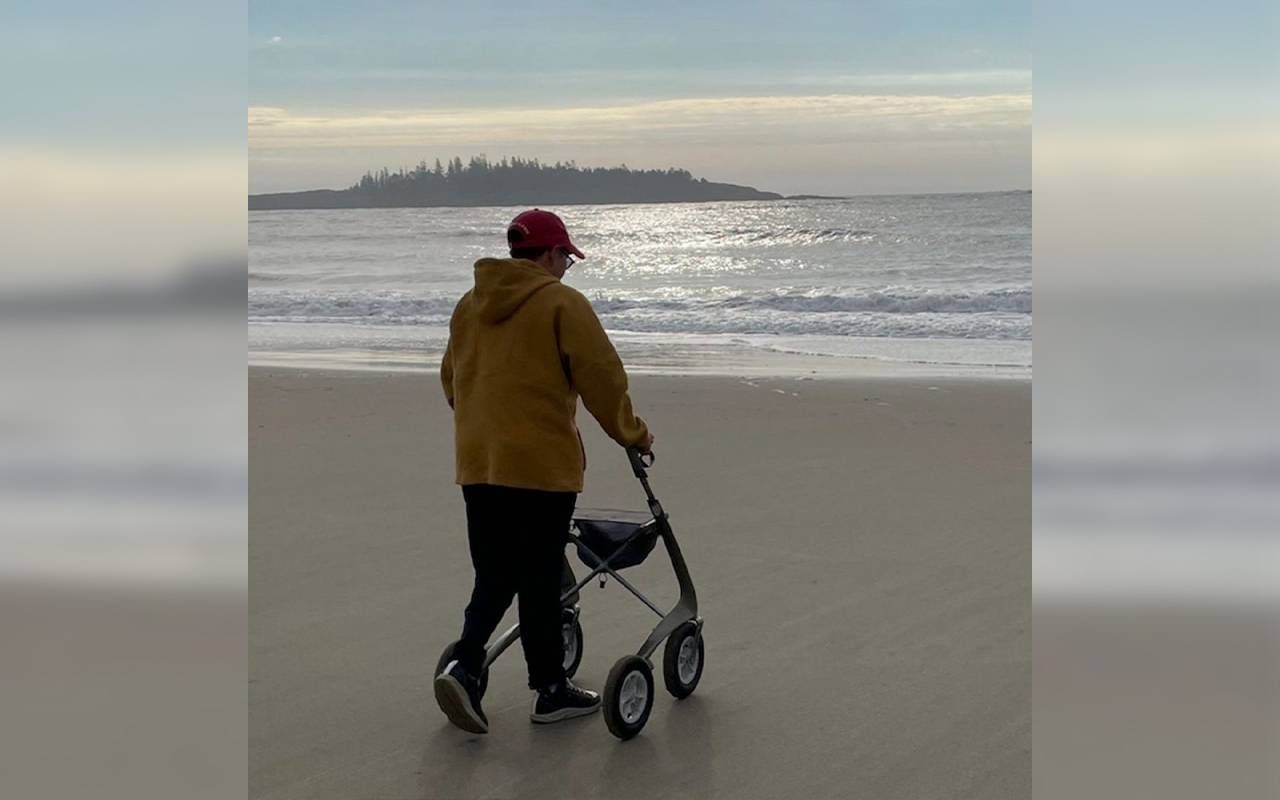With Assistive Devices, Good Design Matters
Two innovators raise the bar on aesthetics for medical alert devices and rollators
At 80, Joan Hall resurrected "the look" that she would flash her daughter, Jean Anne Booth, when she was a teen. Most of us remember it well from our childhood — the one that tells you that you are in trouble and is likely accompanied by the slow enunciation of your full first and middle names.

Booth's offense? She had suggested to her stylish mother, who had modeled most of her life, that she wear a medical alert device.
These items become extensions of ourselves and express our identities. Wearable medical alerts are no exception.
The experience led Booth, an electrical engineer who built and sold two startups to Apple and Texas Instruments, to design a medical alert that her mom would want to wear. One of her early lessons was that form is equally essential to function.
How older adults perceive an assistive device — be it a walker, hearing aid or medical alert device — has a lot to do with whether they will use it consistently or even use it.
Items we wear on our bodies —clothing, jewelry or other accessories— do more than serve a utilitarian function. In some ways, these items become extensions of ourselves and express our identities. Wearable medical alerts are no exception.
Yet, with many medical alerts, aesthetics take a backseat to function. Conflicting color matching, poor material quality, or an unusual shape are a few of the design challenges with wearable medical alerts cited by authors of a 2020 International Journal of Design article.
Booth stated the problem plainly: "There is this belief that when you are old, ugly is OK." She set out on a path to design a product that older adults would want to wear and hired her mom as the "Senior User Experience Advisor."
UnaliWear's Kanega Watch
Hall's job description was to give a thumbs up or down on every idea Booth brought her. As a result, Hall had a change of heart about wearable medical alert devices. She enthusiastically passed out business cards with her new title and brought in a quarter of the 400 people that participated in Booth's early focus groups.
"I love it. It's so attractive. People notice it, and I tell them all about it. They tell me they've never seen anything like it."
Booth discovered that these older adults wanted to wear only one thing, and they wanted that one thing to be a watch. Moreover, they preferred a traditional round face; at this time, the Apple watch still needed to enter the market, and a square or rectangular face was less appealing.
Hall died in 2018, but one of her legacies is UnaliWear's Kanega watch (in Cherokee, Unalii means "friend," and Kanega means "speak." Thus, "a friend that speaks to you"). The voice-activated watch offers fall detection and uses artificial intelligence to make the watch "smarter" about motions that do not fall, significantly reducing false alerts.
From digital breadcrumbs, Booth's team can determine the consistency of use. Their results are promising: 86% of Kanega watch users wear their watch daily, and 92% interact with it daily.
One Kanega watch user, 93-year-old Wendell Keesling, fell recently while trimming trees. It was 95 degrees outside, and he lay on his lawn in the hot sun, unable to move. Yet, emergency services were dispatched because his Kanega watch had detected the fall.
Following an extended hospitalization, Keesling moved to an independent living community where he constantly wears his watch. However, he would wear the watch consistently even if the fall hadn't occurred. "I love it. It's so attractive. People notice it, and I tell them all about it. They tell me they've never seen anything like it," Keesling said.
Redesigned Rollators From byACRE
Anders Berggreen, co-founder and CEO at byACRE in Copenhagen, Denmark, isn't OK with ugly either. So before designing and bringing to market his byACRE rollators, he studied the walkers and rollators (walkers with wheels) being sold.
Most existing models were manufactured in China and produced to be as cost-effective as possible. As a result, they were high on functionality but needed to improve on aesthetics. "They looked like something from World War II," he said.
This small change allows the individual to walk upright, which "forces you to meet people with dignity."
The rollators conveyed that the user was frail, sick and old. He decided the perception needed to change, which meant changing the design. His goal was to create a mobility aid that communicated independence and dignity.
Berggreen, a former film and TV producer, began by considering the word "mobility" in all its contexts. He printed out pictures of fighter jets, eagles, sharks, manta rays, bicycles and race cars — and posted them on a wall in his office. In his rollator design, he wanted to capture the sleek look they shared.
Berggreen also reversed the direction of the handlebars. This small change allows the individual to walk upright, which "forces you to meet people with dignity," Berggreen said.
Linda Cairnes, an artist from Sydney, Australia, is one of these individuals. "People notice and comment on the byACRE: people who would normally see an older woman with a walker as invisible. This is directly because of its design. Apart from giving me a much broader sense of freedom and mobility, it also makes me visible and respected," said Cairnes.
Members of the international design community lauded Berggreen's work, too. In 2019, byACRE's 10.5-pound Carbon Ultralight Rollator won the prestigious Red Dot Design Award.
For Berggreen, a more important mark of success came from an Instagram post. A selfie showed an attractive woman in a swimming suit posing on her rollator. Berggreen knew he had achieved something. Rather than frailty, disability or old age, the image conveyed beauty and vigor.
Empowering Older Adults
The consistent use of an assistive device has far-reaching consequences. It can even change the dynamics of a relationship. Booth believes this is the case with the Kanega watch.
While many medical alert systems offer GPS that caregivers can track on an app, Booth took a different approach, deciding against a caregiver's app. The monitoring center can only track the Kanega watch during an emergency. "The number one fear when you grow older is losing control of your own life," Booth said.
Some older adults lose control when their well-intended children hover too closely, checking to see if they've taken their medications, using a camera to check their daily activity and tracking their whereabouts.
In one recent national survey of older adults and caregivers, 53% of participants responded that medical alert systems invade privacy.
While each older adult and family may want or need something a little different, a medical alert that the family knows is being worn consistently empowers the older adult and might rejigger the family dynamics.
"We serve consumers. They have an independent taste, and they want to decide for themselves. Patients — the decision is made for them."
Imagine talking to Mom daily about a current Netflix show you love rather than the time she took her blood thinner.
"If there is something that you're willing to wear that isn't stigmatizing, then what that allows you to do is change the relationship of the aging experience," Booth said.
Berggreen believes his rollator empowers older adults and those with disabilities, too. This is because he sees his clientele as people rather than patients.
People make their own decisions, while patients are given something — like a prescription —- from a medical professional, Berggreen explained.
"We serve consumers. They have an independent taste, and they want to decide for themselves. Patients — the decision is made for them," Berggreen said.
Different Products, Same Goal
Berggreen and Booth live halfway around the world from each other, have very different backgrounds, and designed and produced two different products.
Yet both recognized a societal problem — assistive devices that older adults are willing to use consistently are rare. Thus, they developed one similar goal: to create a product that provides independence with dignity.
Today, the Kanega watch and byACRE rollators are tangible proof of why design matters to people of all ages.


